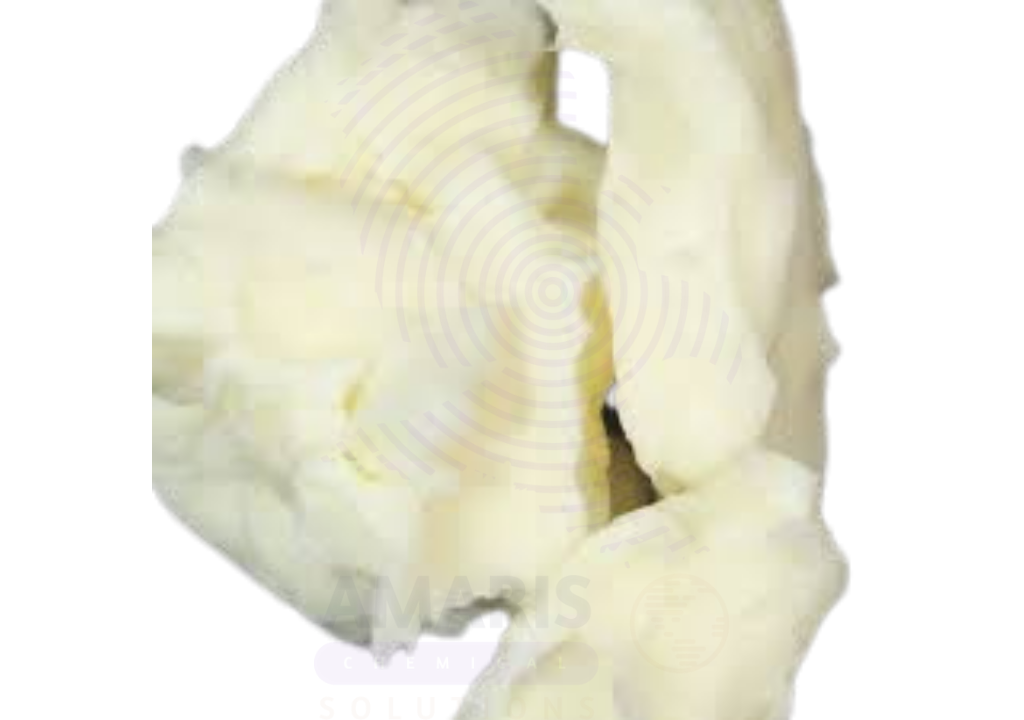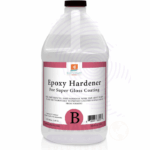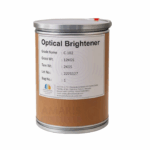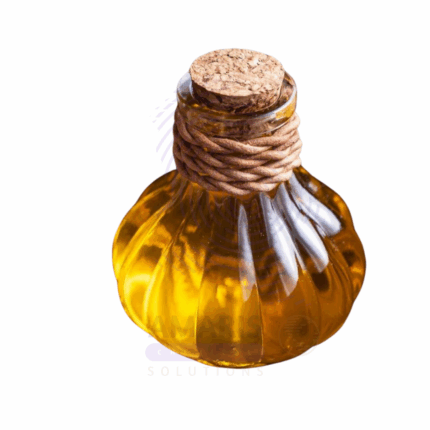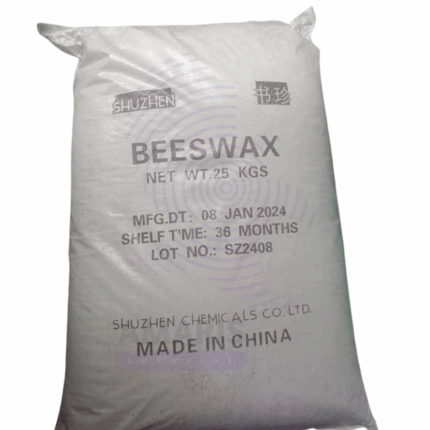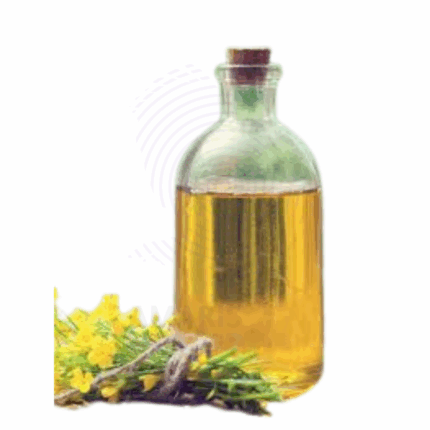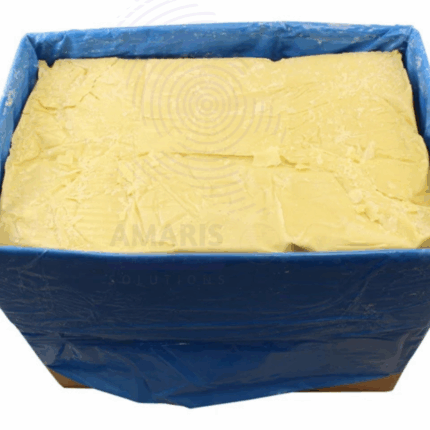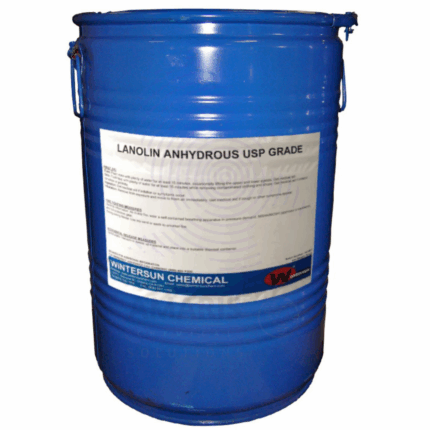Olive Butter
Whatsapp Order
Olive Butter is a natural, creamy, and rich emollient derived from cold-pressed olive oil combined with other natural butters (such as shea or cocoa butter) to create a luxurious skin-conditioning product. It is prized for its deep moisturizing, antioxidant-rich, and soothing properties, making it a popular ingredient in skincare, haircare, and cosmetic formulations. Olive Butter enhances skin elasticity, provides nourishment, and forms a protective barrier against environmental stressors.
Category: Emollients
Tags: Cosmetic formulations, Emollient & Moisturizing, Natural Butter, Olive Butter, Olive Oil Butter
Description
Table of Contents
Toggle
Olive Butter
Primary Uses
- Skin Care Products
- Used as a moisturizer in body butters, creams, lotions, and balms.
- Provides intense hydration and softening for dry and sensitive skin.
- Acts as an emollient to improve skin texture and elasticity.
- Hair Care Products
- Incorporated in conditioners, hair masks, and styling products for deep nourishment.
- Helps repair dry, damaged hair and adds shine.
- Cosmetic Formulations
- Used in lip balms, hand creams, and natural makeup products for moisturizing benefits.
- Adds a smooth, creamy texture to formulations.
- Massage and Aromatherapy
- Employed as a base for massage butters and oils due to its skin-soothing properties.
Secondary Uses
- Natural Healing and Therapeutic Products
- Used in formulations aimed at eczema, psoriasis, and other inflammatory skin conditions.
- Acts as a carrier for essential oils and active botanicals in therapeutic blends.
- Bath and Body Products
- Added to bath melts, scrubs, and exfoliants for moisturizing effects.
- DIY and Artisanal Cosmetics
- Popular ingredient in handmade soaps, body scrubs, and natural skincare recipes.
- Sun Care and After-Sun Products
- Used in after-sun lotions and balms for skin calming and rehydration.
KEY PRODUCT FEATURES
1. Basic Identification Attributes
- Common/Trade Name: Olive Butter
- Source: Cold-pressed olive oil combined with natural plant butters (e.g., shea, cocoa)
- CAS Number: Mixture; no single CAS number
- HS Code: 1515.90.99 (Natural fats and oils and their fractions)
- Synonyms: Olive oil butter blend, natural emollient butter
2. Physical & Chemical Properties
- Physical State: Soft, creamy solid at room temperature
- Color & Odor: Pale yellow to light green; mild, characteristic olive scent
- Melting Point: Approximately 25–35°C (varies with formulation)
- Solubility: Insoluble in water; soluble in oils and organic solvents
- Specific Gravity: Approx. 0.9
3. Safety & Hazard Attributes
- GHS Classification: Generally non-hazardous
- Toxicity: Low toxicity; suitable for topical use
- Allergens: Possible sensitivity to olive or nut components in some individuals
4. Storage & Handling Attributes
- Storage Conditions: Store in a cool, dry place away from direct sunlight
- Container Type: Supplied in jars, tubs, or airtight containers
- Shelf Life: Typically 12–24 months if stored properly
- Handling Precautions: Avoid contamination; use clean utensils to extract
5. Regulatory & Compliance Attributes
- Complies with FDA and EU Cosmetic Regulation for cosmetic ingredients
- Organic and natural certifications possible depending on sourcing
- Suitable for use in natural and organic cosmetic formulations
6. Environmental & Health Impact
- Biodegradability: Readily biodegradable
- Ecotoxicity: Low environmental impact
- Bioaccumulation: Not expected to bioaccumulate
- Carcinogenicity/Mutagenicity: Not classified as hazardous
SAFETY HANDLING PRECAUTIONS
Safety Handling Precautions
- PPE Required: None required for typical cosmetic use
- Handling Guidelines: Use hygienically to avoid contamination
- Storage Measures: Keep container sealed to prevent oxidation
First Aid Measures
- Skin Contact: Generally safe; wash if irritation occurs
- Eye Contact: Rinse with water if accidental contact occurs
- Ingestion: Non-toxic; seek medical advice if large amounts ingested
- Inhalation: Not applicable
Firefighting Measures
- Fire Hazards: Combustible organic material
- Extinguishing Media: Use foam, dry chemical, or CO₂ extinguishers
- Special Precautions: Avoid inhalation of fumes from burning material
- Hazardous Combustion Products: Carbon oxides
Related products
Baobab Oil
Baobab Oil is a luxurious, cold-pressed oil extracted from the seeds of the Adansonia digitata (baobab) tree, native to Africa. Rich in omega fatty acids (especially omega-3, 6, and 9), vitamins A, D, E, and F, and powerful antioxidants, Baobab Oil is prized for its deep moisturizing, skin-rejuvenating, and anti-inflammatory properties. It is a light, non-greasy oil that absorbs quickly into the skin, making it ideal for a wide range of cosmetic and personal care applications.
Baobab Oil is especially suited for dry, sensitive, or mature skin. It supports skin elasticity, improves tone, and helps reduce the appearance of scars and stretch marks. In hair care, it nourishes and protects, leaving hair soft and manageable. Its natural stability and skin compatibility make it a premium ingredient in high-performance formulations.
Beeswax
Beeswax is a natural wax produced by honeybees of the genus Apis. It is secreted by worker bees from specialized glands and used to build honeycomb cells. Beeswax is a complex mixture of esters, fatty acids, and hydrocarbons, characterized by a pale yellow to brown color, a pleasant honey-like aroma, and a firm yet pliable texture. It has excellent emulsifying, binding, and protective properties, making it widely used in cosmetics, pharmaceuticals, food, and industrial applications. Beeswax is prized for its natural origin, biodegradability, and skin-friendly characteristics.
Canola Oil
Canola Oil is a light, non-greasy vegetable oil extracted from the seeds of the Canola plant (Brassica napus, Brassica rapa), a cultivar of rapeseed developed for its low erucic acid content. Rich in monounsaturated fats, omega-3 and omega-6 fatty acids, and vitamin E, it is known for its heart-healthy profile and neutral flavor.
Widely used in the food, cosmetic, pharmaceutical, and industrial sectors, Canola Oil serves as a versatile base oil for cooking, skincare formulations, softgel encapsulation, and biodiesel production. Its high smoke point and oxidative stability make it ideal for both cold and high-temperature applications.
Cocoa Butter
Cocoa Butter, also known as Theobroma oil, is a pale-yellow, edible fat extracted from cocoa beans, primarily from Theobroma cacao. It has a smooth, creamy texture and a mild, characteristic chocolate aroma. Cocoa Butter is solid at room temperature but melts near body temperature, which gives it a luxurious feel when applied to skin or consumed. It is highly valued for its emollient, moisturizing, and protective properties. Cocoa Butter is widely used in cosmetics, pharmaceuticals, food, and confectionery industries. Its stable composition rich in fatty acids such as stearic, palmitic, and oleic acids imparts excellent oxidative stability and a long shelf life.
Coffee Butter
Coffee Butter is a natural, plant-derived fat extracted primarily from the coffee seed pulp or coffee cherry, sometimes from the coffee bean itself. It is a creamy, pale yellow to light brown solid at room temperature with a mild coffee aroma. Coffee Butter is rich in fatty acids, antioxidants, and vitamins, making it a valuable ingredient in cosmetics, skincare, and specialty food products. Known for its emollient, moisturizing, and antioxidant properties, Coffee Butter helps to nourish and protect the skin while providing a pleasant sensory experience. It is gaining popularity as a sustainable by-product of coffee processing, contributing to zero-waste initiatives.
Isopropyl Myristate
Isopropyl Myristate is a clear, colorless, and oily liquid ester formed by the reaction of isopropyl alcohol and myristic acid. It has a mild, pleasant odor and excellent spreading properties. IPM is widely used in cosmetics, pharmaceuticals, and industrial applications as an emollient, solvent, and penetration enhancer due to its ability to improve texture and absorption of topical formulations.
Lanolin Anhydrous
Lanolin Anhydrous is a purified, waxy substance derived from the sebaceous glands of sheep’s wool. It appears as a yellow to amber, semi-solid wax with a characteristic mild odor. Lanolin is highly valued for its excellent emollient, moisturizing, and protective properties, making it widely used in cosmetic, pharmaceutical, and personal care formulations. The anhydrous form is free from water, which enhances its stability and shelf life, and allows it to act as a natural barrier to lock moisture into the skin.
Oleic Acid
Oleic Acid is a naturally occurring monounsaturated fatty acid commonly derived from vegetable oils such as olive, sunflower, and canola oils. This oily liquid is widely used in the chemical, pharmaceutical, cosmetic, and food industries due to its excellent emollient, surfactant, and stabilizing properties. Oleic Acid 75% is a key raw material in manufacturing soaps, detergents, lubricants, and personal care products. Its amphiphilic nature makes it an effective emulsifier and penetration enhancer.


 Preservatives(food)
Preservatives(food) Flavor Enhancers
Flavor Enhancers Acidulants
Acidulants Sweeteners
Sweeteners Antioxidants
Antioxidants Colorants(food)
Colorants(food) Nutraceutical Ingredients (food)
Nutraceutical Ingredients (food) Nutrient Supplements
Nutrient Supplements Emulsifiers
Emulsifiers
 Collectors
Collectors Dust Suppressants
Dust Suppressants Explosives and Blasting Agents
Explosives and Blasting Agents Flocculants and Coagulants
Flocculants and Coagulants Frothers
Frothers Leaching Agents
Leaching Agents pH Modifiers
pH Modifiers Precious Metal Extraction Agents
Precious Metal Extraction Agents
 Antioxidants(plastic)
Antioxidants(plastic) Colorants (Pigments, Dyes)
Colorants (Pigments, Dyes) Fillers and Reinforcements
Fillers and Reinforcements Flame Retardants
Flame Retardants Monomers
Monomers Plasticizers
Plasticizers Polymerization Initiators
Polymerization Initiators Stabilizers (UV, Heat)
Stabilizers (UV, Heat)
 Antifoaming Agents
Antifoaming Agents Chelating Agents
Chelating Agents Coagulants and Flocculants
Coagulants and Flocculants Corrosion Inhibitors
Corrosion Inhibitors Disinfectants and Biocides
Disinfectants and Biocides Oxidizing Agents
Oxidizing Agents pH Adjusters
pH Adjusters Scale Inhibitors( water)
Scale Inhibitors( water)
 Antioxidants(cosmetic)
Antioxidants(cosmetic) Emollients
Emollients Fragrances and Essential Oils
Fragrances and Essential Oils Humectants
Humectants Preservatives
Preservatives Surfactants(cosmetic)
Surfactants(cosmetic) Thickeners
Thickeners UV Filters
UV Filters
 Fertilizers
Fertilizers Soil Conditioners
Soil Conditioners Plant Growth Regulators
Plant Growth Regulators Animal Feed Additives
Animal Feed Additives Biostimulants
Biostimulants Pesticides (Herbicides, Insecticides, Fungicides)
Pesticides (Herbicides, Insecticides, Fungicides)
 Active Pharmaceutical Ingredients (APIs)
Active Pharmaceutical Ingredients (APIs) Excipients
Excipients Solvents(pharmaceutical)
Solvents(pharmaceutical) Antibiotics
Antibiotics Antiseptics and Disinfectants
Antiseptics and Disinfectants Vaccine Adjuvants
Vaccine Adjuvants Nutraceutical Ingredients (pharmaceutical)
Nutraceutical Ingredients (pharmaceutical) Analgesics & Antipyretics
Analgesics & Antipyretics
 Analytical Reagents
Analytical Reagents Solvents(lab)
Solvents(lab) Chromatography Chemicals
Chromatography Chemicals Spectroscopy Reagents
Spectroscopy Reagents microbiology-and-cell-culture-reagents
microbiology-and-cell-culture-reagents Molecular Biology Reagents
Molecular Biology Reagents Biochemical Reagents
Biochemical Reagents Inorganic and Organic Standards
Inorganic and Organic Standards Laboratory Safety Chemicals
Laboratory Safety Chemicals Specialty Laboratory Chemicals(Special Laboratory Equipment)
Specialty Laboratory Chemicals(Special Laboratory Equipment)
 Demulsifiers
Demulsifiers Hydraulic Fracturing Fluids
Hydraulic Fracturing Fluids Scale Inhibitors(oil)
Scale Inhibitors(oil) Surfactants(oil)
Surfactants(oil) Drilling Fluids
Drilling Fluids
 Dyes and Pigments
Dyes and Pigments Bleaching Agents
Bleaching Agents Softening Agents
Softening Agents Finishing Agents
Finishing Agents Antistatic Agents
Antistatic Agents
 Admixtures
Admixtures Waterproofing Agents
Waterproofing Agents Sealants and Adhesives
Sealants and Adhesives Curing Compounds
Curing Compounds Concrete Repair Chemicals
Concrete Repair Chemicals Anti-Corrosion Coatings
Anti-Corrosion Coatings
 Surfactants(cleaning)
Surfactants(cleaning) Builders
Builders Enzymes
Enzymes Solvents (Cleaning)
Solvents (Cleaning) Fragrances
Fragrances
 Electronic Chemicals
Electronic Chemicals Catalysts
Catalysts Lubricants
Lubricants Photographic Chemicals
Photographic Chemicals Refrigerants
Refrigerants Automotive chemicals
Automotive chemicals Pyrotechnic Chemicals
Pyrotechnic Chemicals
 Biodegradable Surfactants
Biodegradable Surfactants Bio-based Solvents
Bio-based Solvents Renewable Polymers
Renewable Polymers Carbon Capture Chemicals
Carbon Capture Chemicals Wastewater Treatment Chemicals
Wastewater Treatment Chemicals
 Pigments
Pigments Solvents(paint)
Solvents(paint) Specialty Coatings
Specialty Coatings Binders/Resins
Binders/Resins Additives
Additives Driers
Driers Anti-Corrosion Agents
Anti-Corrosion Agents Functional Coatings
Functional Coatings Application-Specific Coatings
Application-Specific Coatings
 Fresh Herbs
Fresh Herbs Ground Spices
Ground Spices Whole Spices
Whole Spices Spice Blends
Spice Blends Dried Herbs
Dried Herbs
 Leavening Agents
Leavening Agents Dough Conditioners
Dough Conditioners Flour Treatments
Flour Treatments Fat Replacers
Fat Replacers Decoratives
Decoratives Preservatives(baking)
Preservatives(baking)
 Plasticizers & Softeners
Plasticizers & Softeners Reinforcing Agents
Reinforcing Agents Adhesion Promoters
Adhesion Promoters Vulcanizing Agents
Vulcanizing Agents Antidegradants
Antidegradants Blowing Agents
Blowing Agents Fillers & Extenders
Fillers & Extenders Accelerators & Retarders
Accelerators & Retarders